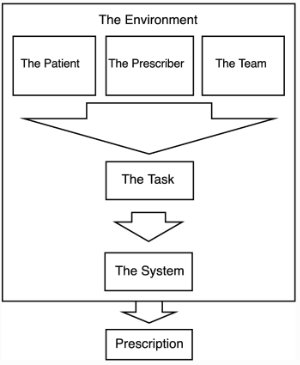Electronic prescribing: Different professions, similar problems.

Our research group has a new paper (Open Access) looking at the experiences of multi-professional prescribers using an electronic prescribing system. We suspected some differences between the professional groups (nurses, pharmacists, and doctors), but they all reported similar experiences. The pharmacists had some differing perspectives because of their monitoring role in prescribing, but their own experiences matched those of the other professions. Not entirely unexpected given what we know about human cognitive bias.
We present an analysis of six major interacting themes involved in the production of a prescription. Many of these echo areas found in other studies.

We conclude that:
Medical and non-medical prescribers have similar experience of prescribing errors when using CPOE, with the broad areas of concern aligned with existing published literature about medical prescribing. Causes of electronic prescribing errors are multifactorial in nature and prescribers describe how factors interact to create the conditions errors. Solutions focused on a single factor, such as system design or training, may only result in only limited impact on prescribing errors. While interventions should focus on direct CPOE issues, such as training and design, socio-technical and environmental aspects of practice remain important.
Alshahrani, F., Marriott, J.F. & Cox, A.R. A qualitative study of prescribing errors among multi-professional prescribers within an e-prescribing system. Int J Clin Pharm (2020). https://doi.org/10.1007/s11096-020-01192-0
Photo by National Cancer Institute